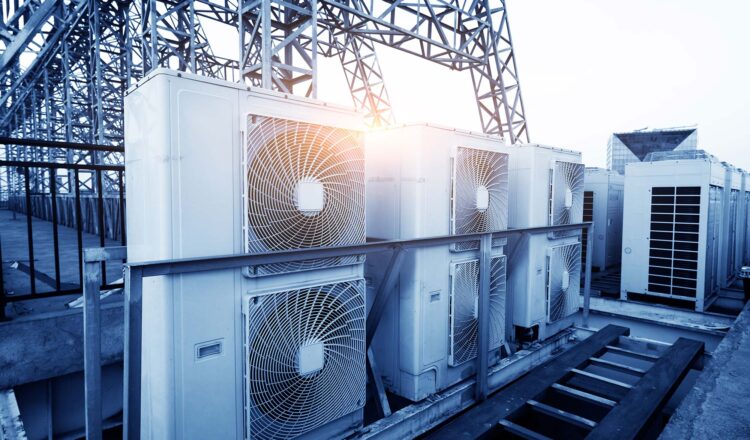The Essential Guide to HVAC Design in Building Projects: Key Recommendations
The Essential Guide to HVAC Design in Building Projects: Key Recommendations
When embarking on a new building project or renovating an existing structure, one aspect often overlooked is the HVAC (Heating, Ventilation, and Air Conditioning) system. Proper HVAC design is crucial for ensuring comfort, energy efficiency, and overall building performance. Here’s a comprehensive guide to help you navigate the complexities of HVAC design and make informed decisions.
- Understand Your Building’s Needs
Before diving into HVAC design, it’s important to have a clear understanding of your building’s specific needs:
Building Type and Use: Different buildings require different HVAC approaches. For instance, residential homes, office buildings, and industrial spaces have varied heating, cooling, and ventilation demands.
Size and Layout: The size and layout of the building will impact the HVAC system’s design. Larger spaces or multi-story buildings may require more complex systems or zoning.
Occupancy Patterns: The number of occupants and their activities can influence the HVAC requirements. High-occupancy areas may need enhanced ventilation to ensure air quality.
- Design for Energy Efficiency
Energy efficiency is a critical factor in HVAC design. An efficient system not only reduces operational costs but also minimizes environmental impact:
High-Efficiency Equipment: Invest in high-efficiency HVAC units that have a good SEER (Seasonal Energy Efficiency Ratio) rating for cooling and AFUE (Annual Fuel Utilization Efficiency) rating for heating.
Proper Insulation: Ensure that your building is well-insulated. Proper insulation reduces the load on your HVAC system by maintaining the desired temperature.
Smart Thermostats: Install smart thermostats to better control heating and cooling, which can lead to significant energy savings.
- Optimize Ventilation
Ventilation is key to maintaining indoor air quality and comfort:
Balanced Ventilation: Ensure that your system provides a balance of fresh air intake and exhaust. This helps prevent issues like mold growth and ensures a steady supply of clean air.
Heat Recovery Ventilators (HRVs) and Energy Recovery Ventilators (ERVs): These systems can help recover energy from exhausted air, making ventilation more energy-efficient.
- Consider Zoning and Controls
Zoning allows for different areas of a building to be heated or cooled independently:
Zoning Systems: Implement zoning systems to tailor climate control to different parts of the building. This can lead to increased comfort and energy savings.
Automated Controls: Use automated controls and sensors to adjust temperatures based on occupancy, time of day, or weather conditions.
- Plan for Maintenance
A well-maintained HVAC system performs better and lasts longer:
Regular Maintenance Schedule: Establish a regular maintenance schedule that includes filter changes, system inspections, and cleaning.
Professional Service: Hire experienced HVAC professionals for maintenance and repairs. Regular check-ups can prevent small issues from becoming costly problems.
- Integrate with Building Design
HVAC systems should be seamlessly integrated into the overall building design:
Ductwork Design: Plan ductwork routes carefully to avoid conflicts with structural elements and ensure efficient airflow.
Space Considerations: Allocate adequate space for HVAC equipment and maintenance access. This can be particularly important for large or complex systems.
- Stay Informed on Regulations and Standards
Ensure compliance with local building codes and industry standards:
Building Codes: Adhere to local building codes related to HVAC systems, which are designed to ensure safety and efficiency.
Industry Standards: Familiarize yourself with industry standards such as ASHRAE (American Society of Heating, Refrigerating and Air-Conditioning Engineers) guidelines to ensure best practices.
- Incorporate Sustainable Practices
Sustainability is increasingly important in modern building projects:
Renewable Energy Sources: Consider integrating renewable energy sources like solar panels or geothermal systems to reduce reliance on non-renewable energy.
Green Certifications: Aim for green building certifications such as LEED (Leadership in Energy and Environmental Design) to enhance the environmental performance of your building.
Effective HVAC design is pivotal to the success of any building project. By understanding your building’s needs, focusing on energy efficiency, optimizing ventilation, and planning for maintenance, you can create a comfortable and efficient environment. Integrating HVAC design with the overall building plan and staying informed on regulations will ensure a system that meets both current and future demands. Embrace sustainable practices to enhance your building’s performance and contribute to a greener future.

Leave a Comment